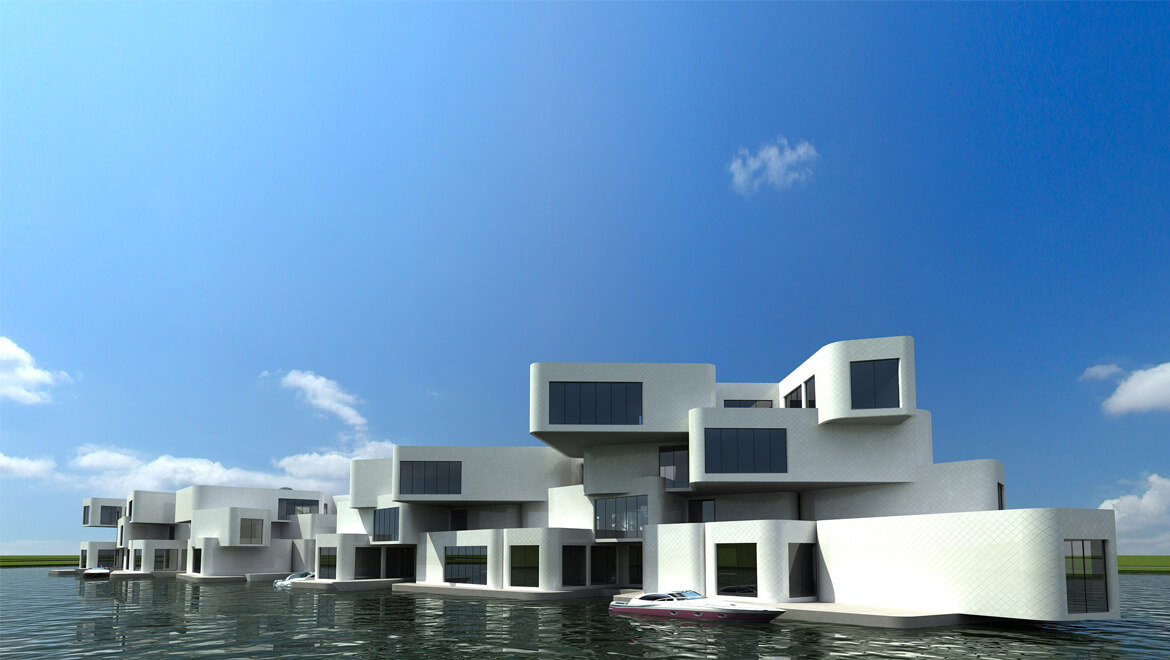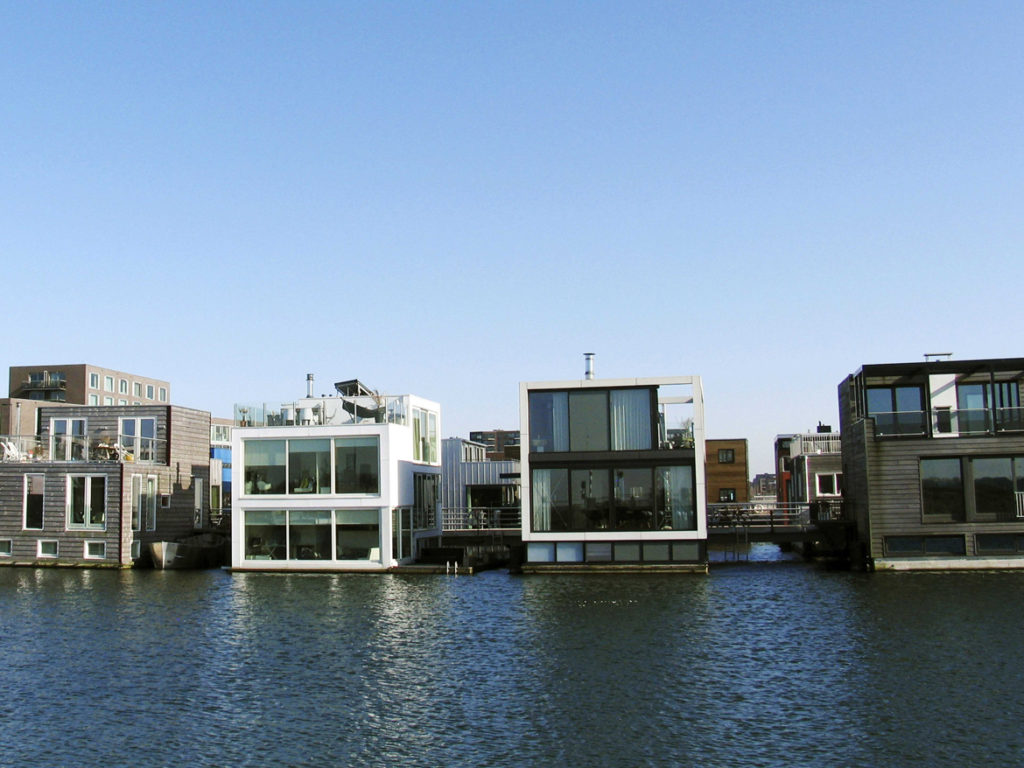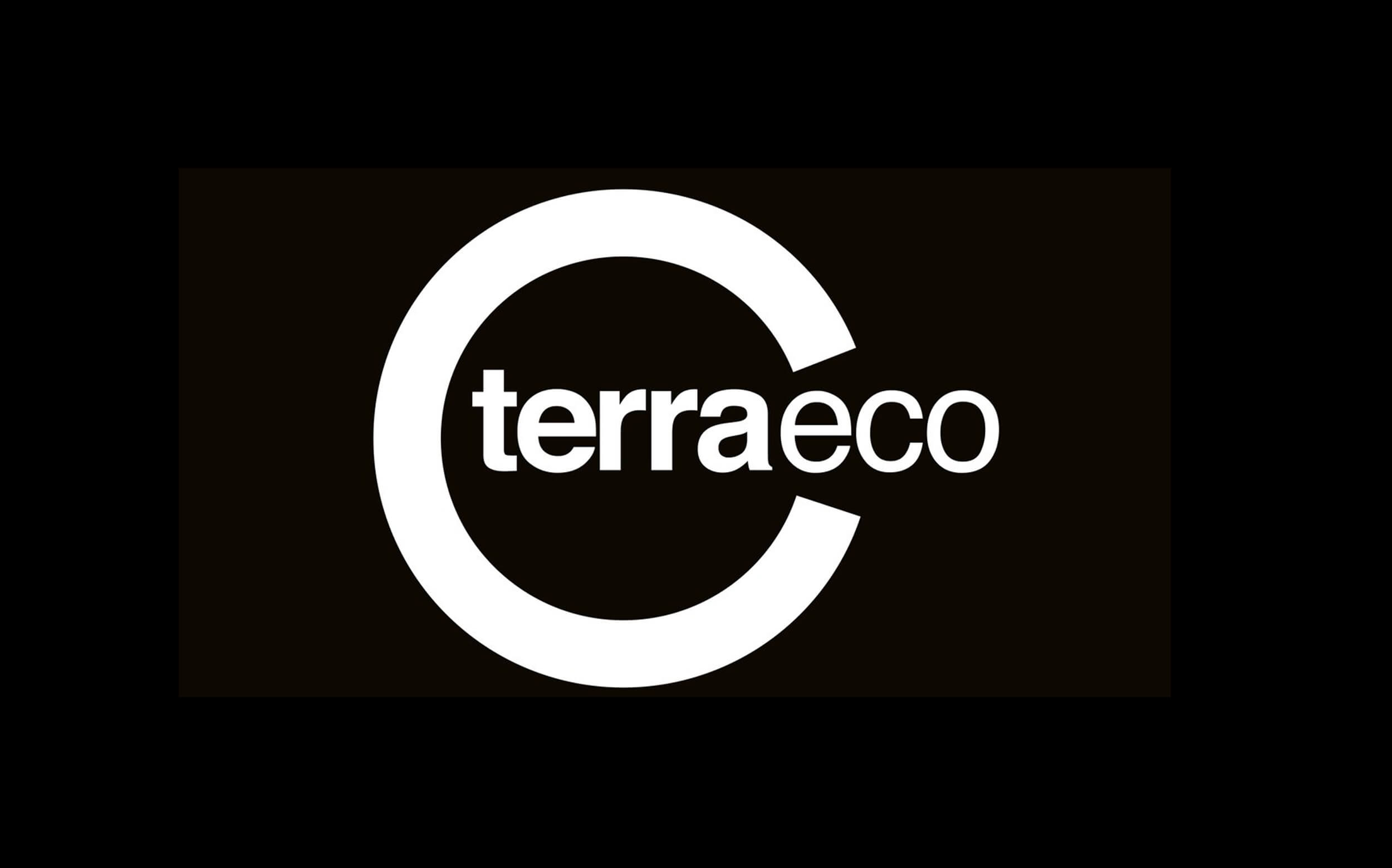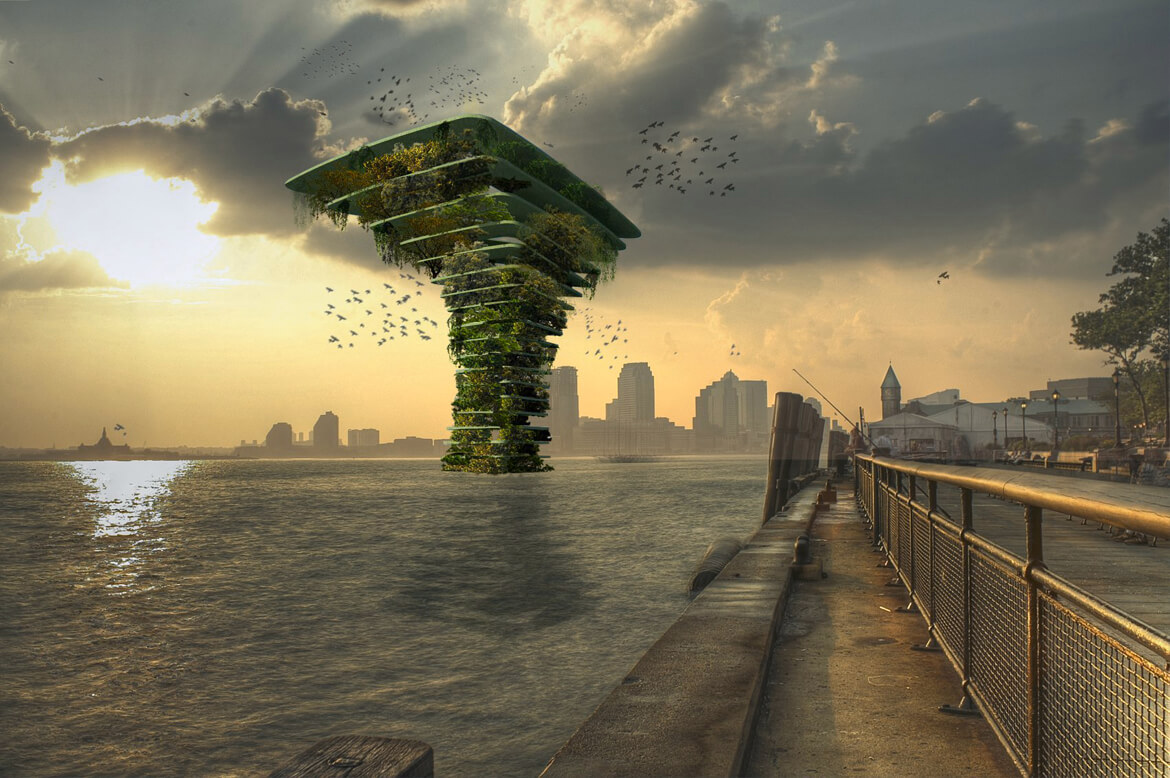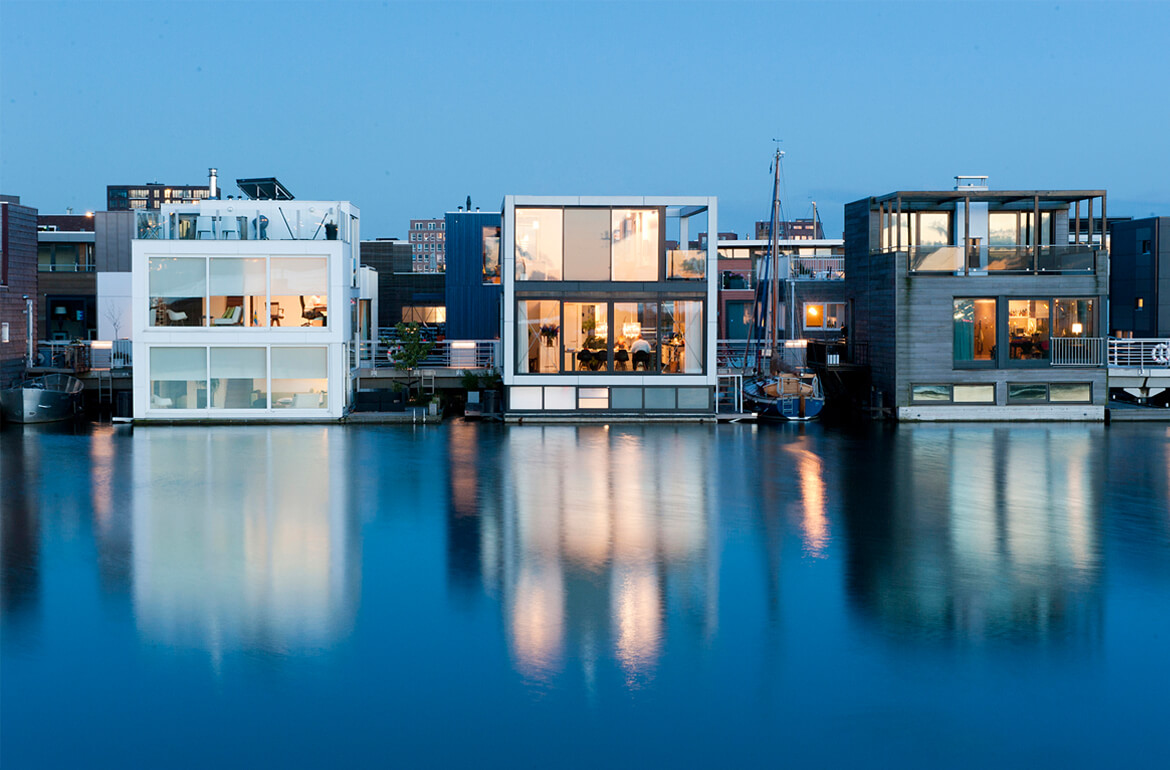Why Blue is Better
Annelie Rozeboom
Hi Europe
October.2015
Architect Koen Olthuis draws on a roll of paper while explaining why we should be building our cities on the water and how he is planning to help the poor with his ideas. “As an architect, you can design towers, but every child can do that in their Minecraft game. Plus none of the towers we build now will be there in 300 years’ time. What I want to leave behind at the end of my career are concepts and ideas, the main idea is that we need to push our cities unto the water.”
Green is good, blue is better is the motto of this Dutch architect. “Our cities don’t change fast enough. We build houses and building and expect them to be used for ever, but our society changes every ten years. If parts of our cities float, we are much more flexible. The center of Amsterdam will always be the same, but the neighborhoods around it change all the time. If buildings float, you can just pull them away and put them somewhere else,” Olthuis told Hi-Europe.
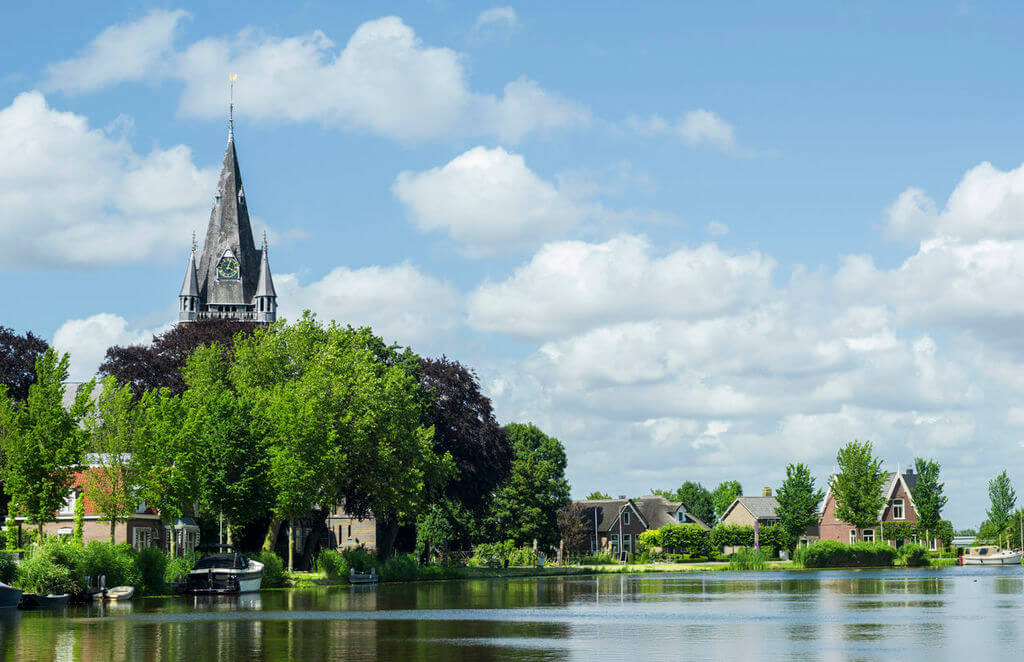
Pict: selimaksan
Working with the Water
One-half of the Netherlands is flood-prone and about one-quarter is below sea level, so it’s no wonder the Dutch spend their time developing ways to incorporate water into their style of living. The philosophy is shifting from fighting the water to living with it, or rather, on it. Instead of trying to claw back more land from the sea, developers are exploring the cost-efficiency of building homes that rise and fall with the tides. “We need to start working with the water in a more intelligent way,” Olthuis says.
This relatively new amphibious architecture is attracting interest from around the world, with floating and amphibious homes and schools now being designed for flood plains everywhere. Amphibious architecture is for both dry and wet conditions, so the houses stay dry and on the ground during normal times and then when the water arrives, they can float up.

Pict: Architect Koen Olthuis – Waterstudio.NL
Waterstudio
Olthuis wants to do much more than build a few villas. His architectural bureau Waterstudio.NL has designed complete apartment complexes, which could accommodate hundreds of people. And that is just one project. There is also a 33-meter-tall trees that can float. “Our cities have become sick environments. Green has been pushed away, but bees and other insects need quiet places. Our sea tree is like a cut-up park, which floats at a safe distance from the shore. Nature will take over on the platform and create its own ecosystem.”
Olthuis is also planning to help people in the slums of the world, which are often located on flood plains. “Worldwide you see that the most vulnerable people are being pushed into the water,” he says. This coming month he will send a floating school to Dakar – it’s a container that floats on empty plastic bottles. “The way to upgrade a slum is by installing facilities like schools and internet cafés, or easily movable small buildings that slum entrepreneurs can use. We have designed a kind of toolbox, which have 20 functions inside. This way, the entrepreneurs can choose what it is they need.”
Olthuis exports his concepts all around the globe, including to the flood zones of Hainan Island. “They have land there that they can’t use, but they will if they take our technology.” He also sells floating islands to Dubai. “Making artificial islands out of sand doesn’t work. In Dubai they built some, but they are too far away from the coast, and there is no electricity or drinking water. We are now going to put floating islands in between.”
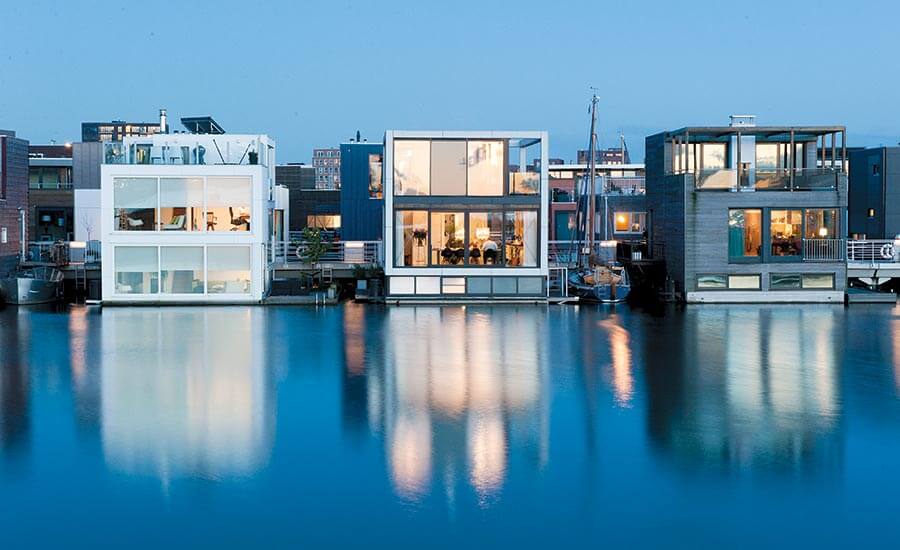
Pict: Architect Koen Olthuis – Waterstudio.NL
Fight Against the Sea
The Dutch are famous for their age-old fight against the sea, and they have the best flood management technologies in the world. In the beginning, the people in this low country put their homes on artificial hills called terpen, but they soon started building dikes. Popular in the middle ages were wierdijken, earth dikes with a protective layer of seaweed. Later dikes had a vertical screen of timbers backed by an earth bank, but these were replaced by stones after the timber was eaten by shipworms. When the polder windmill was invented in the 15th century, it meant that land could also be drained.
The dikes around the rivers were maintained by the famers who lived next to them. Special water board directors would come to check every three years. This changed radically after a devastating North Sea flood in 1953, which resulted in 1,800 deaths. The government adopted a “never again” attitude, and built dams all around the country, guarding all main river estuaries and sea inlets. According to computer simulations, today’s defenses in the Netherlands are supposed to withstand the kind of flood so severe that it would occur only once in 10,000 years.
“We have pretty much won the fight against the sea,” architect Olthuis says. “The problem now is rainwater. Holland has 3500 low-lying polders enclosed by dykes that function as sponges – they soak up excessive rain water. However, more and more of this land is now used for housing. These are ideal places to build amphibious houses.”
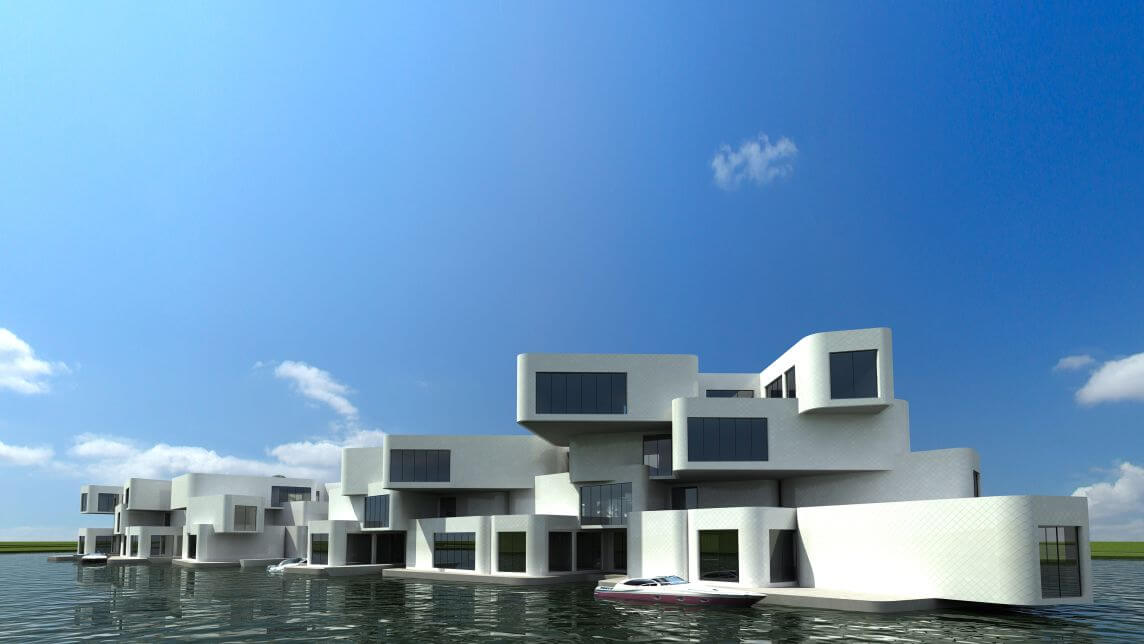
Pict: Architect Koen Olthuis – Waterstudio.NL
Rising Sea Levels
Dutch scientists predict a rise in sea levels of up to 110cm by the year 2100. “We can make the dikes higher, that’s not a problem at all. Technically, all that is possible. The problem with a high dike is that when it breaks, more water will come in,” he says.
There is also growing pressure on existing land. The Dutch government estimates that 500,000 new homes will be needed in the next two decades. Most of the land suitable for conventional building has already been used up, so Dutch architects are encouraged to experiment with new solutions. “The palace in the center of Amsterdam was built on 13.654 wooden poles. It’s the densest forest in the Netherlands. There was real innovation in those times. We are built on places where there shouldn’t be land at all. It’s not about giving up, it’s about continuing to grow,” says Olthuis.
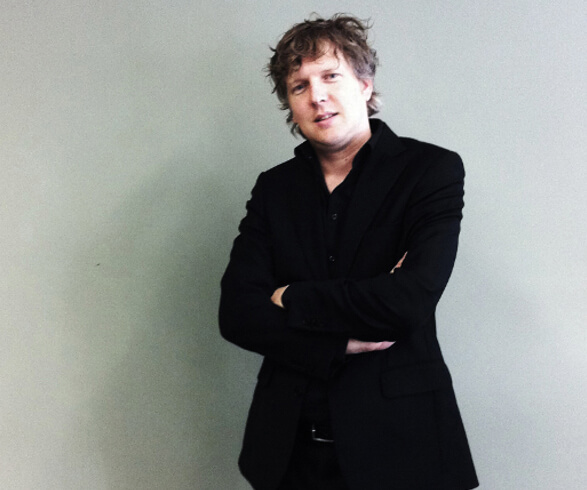
Koen Olthuis
‘Maak van Bangkok opnieuw een drijvende stad’
© Courtesy of the Straits Times
September.22.2015
De amfibiewoningen van het Nederlandse bureau Waterstudio inspireren Aziatische architecten om hun traditie van drijvende architectuur te moderniseren. Foto: rr
Nu de klimaatverandering de zeespiegel doet stijgen, grijpen kustgebieden terug naar eeuwenoude bouwwijzen: drijvende architectuur moet wonen in overstromingsgebieden mogelijk maken.
Van de poldergebieden van Louisiana in de VS tot de delta van Bangladesh, overal ter wereld onderzoeken architecten en ingenieurs hoe ze eeuwenoude drijvende architectuur kunnen moderniseren om het hoofd te bieden aan stijgende zeespiegels. Ontwerpers van amfibische huizen en scholen verzamelden onlangs in Bangkok voor de eerste International Conference on Amphibious Architecture, Design and Engineering.
Het was vooralsnog een bescheiden bijeenkomst van een vijftigtal mensen – goed voor 80 procent van de internationale experts in deze vorm van bouwen. De keuze van de hoofdstad van Thailand was geen toeval. Honderdvijftig jaar geleden was Bangkok voornamelijk een drijvende stad en alles wijst erop dat ze dat over minder dan honderdvijftig jaar opnieuw zal zijn. Een groot gedeelte van de stad ligt immers onder de zeespiegel en blijft verder zinken.
Een van de deelnemers aan het congres was Koen Olthuis van Waterstudio, een Nederlands bedrijf dat overal ter wereld drijvende huizen voor de superrijken bouwt. Olthuis wil die technologie nu overbrengen naar de sloppenwijken van de wereld, die vaak op het water liggen of eraan grenzen. ‘Wereldwijd leven ongeveer een miljard mensen in sloppenwijken. Zestig tot zeventig procent van hen woont dicht bij het water, of wordt erdoor beïnvloed. Maar niemand wil in die gebieden investeren, omdat het juridisch grijze zones zijn.’ Een luxevilla op het water kan duizenden mensen blij maken, ‘maar we kunnen tienduizenden mensen blij maken door huizen en scholen in sloppenwijken te bouwen’, aldus nog Olthuis.
Amfibiehuis
De duizenden mensen die tijdens de overstromingsramp van 2011 in Thailand uit hun woningen werden verdreven en wekenlang tot aan het middel in het water overleefden, zullen het waarschijnlijk met hem eens zijn. Volgens een schatting van de Wereldbank kostte die overstroming Thailand 41 miljard dollar aan schade en verloren economische activiteit. Bangkok, dat in een overstromingsgebied ligt, is slechts een van de grote steden in de regio die kwetsbaar zijn voor hoge waterstanden, een stijgende zeespiegel en extreem weer. Onder meer Dhaka en Jakarta verkeren in hetzelfde geval. Tientallen kleinere steden aan delta’s en kusten lopen eveneens gevaar.
De Thaise architect Chutayaves Sinthuphan, een van de organisatoren van het congres, heeft onlangs een experimenteel amfibisch huis ontworpen voor de Thaise National Housing Authority. ‘Amfibische architectuur bouwt structuren voor zowel droge als natte omstandigheden. In normale tijden staan de huizen op het droge, maar tijdens een overstroming stijgen ze met het water mee’, zegt de aan de universiteit van Columbia opgeleide architect. Het huis dat hij in de provincie Ayutthaya heeft gebouwd, rust op een fundering van in staal gevatte blokken piepschuim, met voldoende speling om het huis op een stijgende vloed te laten drijven. De blokken kosten 30 procent meer dan een normale fundering.
Chutayaves zegt dat het ideaal zou zijn als alles op palen kon worden gebouwd, zoals in de traditionele Thaise dorpen. Maar in het sterk verstedelijkte land is die traditie een uitzondering geworden. ‘In de Thaise gezinnen blijven de volwassen kinderen thuis wonen. Er komen kleinkinderen, er is meer plaats nodig en de benedenverdieping wordt in gebruik genomen. De lege ruimte van vroeger wordt dus woonruimte.’
Een andere congresganger is Fatos Omar Othman, een sociale ondernemer uit Maleisië en een van de stichters van Vlot Homes, een in Petaling Jaya gebaseerd bedrijf dat in opdracht van de premier van Penang de eerste drijvende huizen voor de staat heeft ontwikkeld. ‘De huizen zijn er, maar voorlopig blijft het bij prototypes. Wij beschouwen Maleisië als een proefterrein’, zegt hij.
Luchthaven op het dak
‘We moeten met de natuur leven in plaats van ertegen te vechten’, zegt architect Chutayaves over de amfibische architectuur. ‘Wij onderzoeken hoe Bangkok kan overleven als het water verscheidene meters stijgt. We voeren concrete studies uit, bijvoorbeeld voor een luchthaven bovenop een gebouw.’
Architecten die denken zoals hij worden in Thailand echter nog als buitenbeentjes beschouwd. ‘De mensen hebben een kort geheugen. Het zal waarschijnlijk nog eens tien jaar duren voor het publiek begrijpt dat er in Bangkok echt iets moet gebeuren.’
De Standaard is lid van het Climate Publishers Network. Daardoor kan de krant de beste klimaatverhalen uit 25 internationale kwaliteitskranten aanbieden.
Floating City Apps: A Lifeline for Slums
By Carol Matlack
Bloomberg Businessweek
September.2015
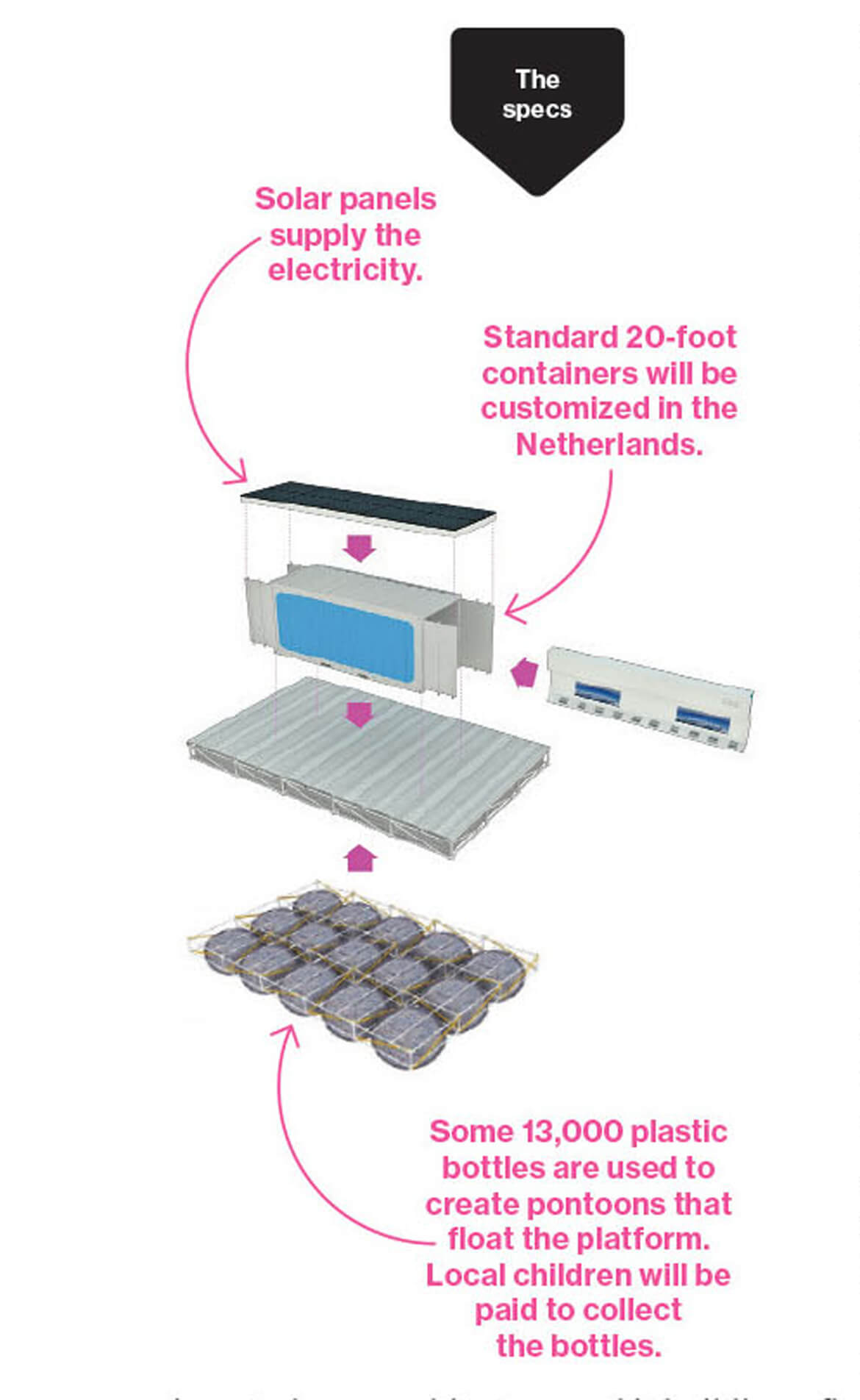
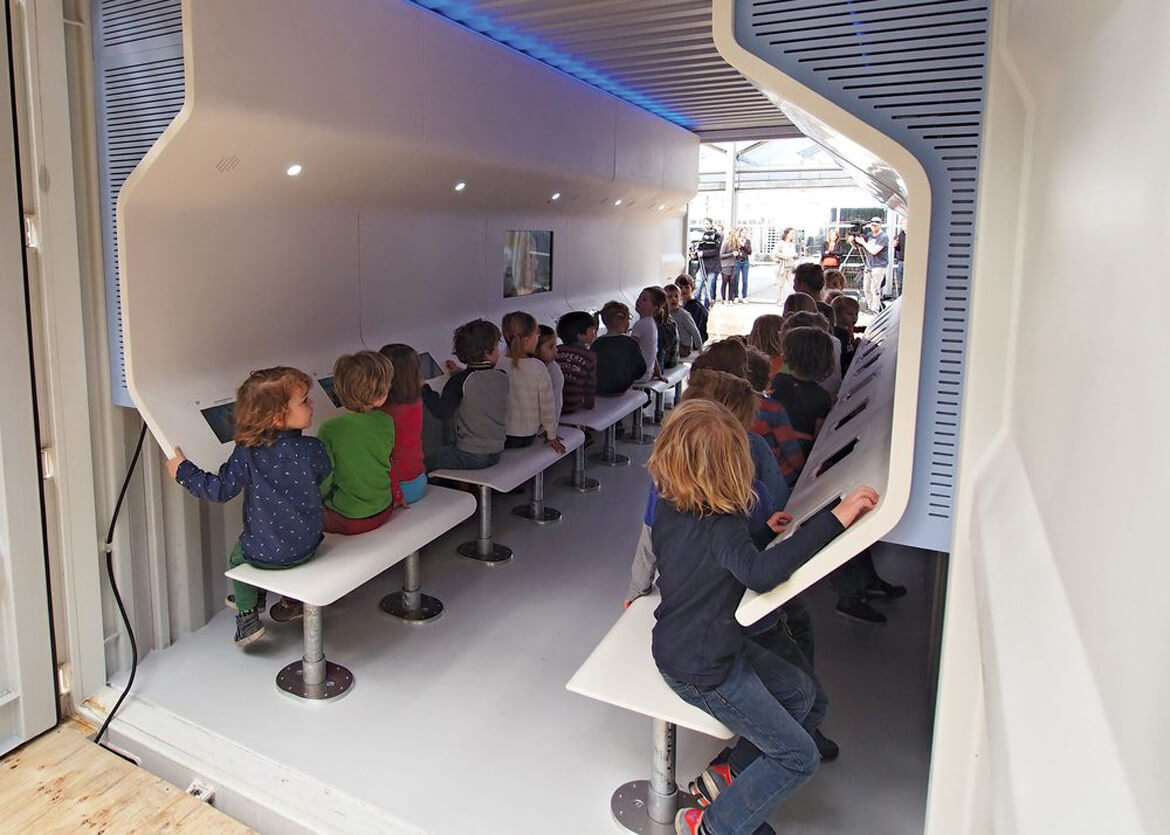
Dutch architecture firm Waterstudio uses shipping containers to build structures that benefit people living in flood-ravaged shantytowns.
Firm: Waterstudio
Location: Rijswijk, Netherlands
Total Cost: $28,000
More than 600 million people worldwide live in shantytowns that suffer chronic flooding. Because these settlements are often illegal, entrepreneurs and community groups can’t get the building permits, insurance, and bank loans to open grocery stores, health clinics, and other essential establishments.
Dutch architect Koen Olthuis thinks he has a solution: His Floating City Apps are structures built from shipping containers that can be docked alongside waterfront slums. The first, set to be deployed in Dhaka, Bangladesh, this fall, will be outfitted with 20 computer workstations. It will be used as a classroom in the daytime and as an Internet café in the evening. Unesco and local non-profit are subsidizing construction. Because the units are vessels, they will qualify for insurance and private financing, which may also make them attractive options for local business.
Olthuis’s firm, Waterstudio, specializes in waterborne architecture and building floating resort in Maldives. He wants to put some of that know-how to work for the benefit of the poor. “The architecture is simple”, he says. “But you need to have a business model”.
This demonstration unit in the Netherlands is outfitted as an education and communications center, with 20 touchscreen workstations.
SOURCE: FLOATING CITY APPS
Holländskt flyt mot stigande havsnivåer
By Sebastian van Baalen
Syre
August.2015
Sebastian van Baalen – 2 år sedan
Han kallas den flytande holländaren och har utsetts till en av världens viktigaste tänkare av the Times. Koen Olthuis är en nederländsk arkitekt som propagerar för att holländarna måste lära sig att leva med stigande havsnivåer. Men hans
idéer har implikationer långt bortom Nederländerna.
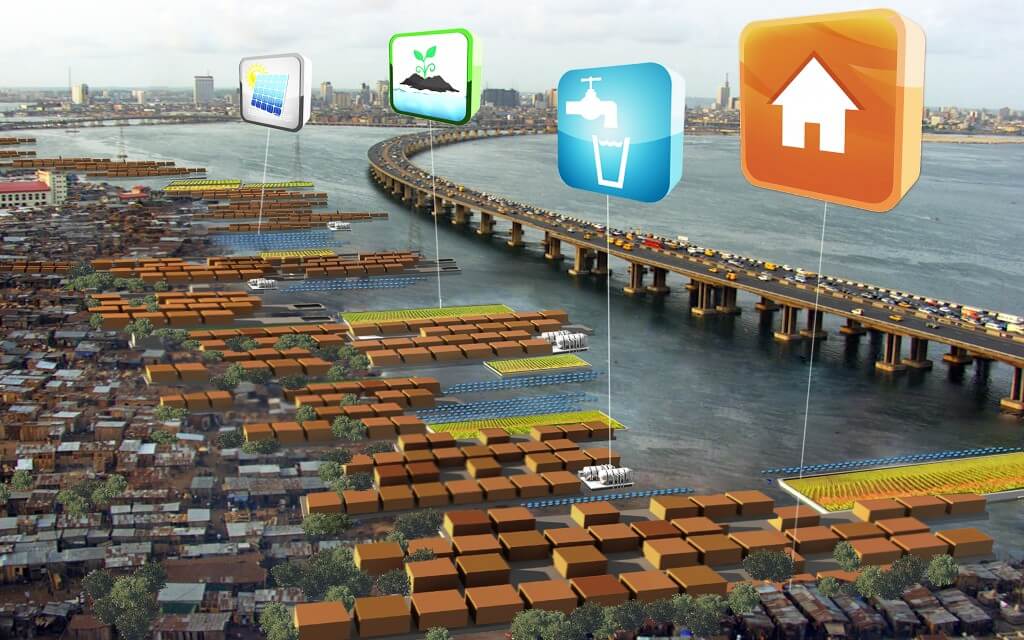 Med hjälp av cityappar vill arkitekterna på Waterstudio tillgodose grundläggande behov i världens vattennära slumområden. Foto: Sebastian van Baalen
Med hjälp av cityappar vill arkitekterna på Waterstudio tillgodose grundläggande behov i världens vattennära slumområden. Foto: Sebastian van Baalen
Nederländerna är ett av världens lägst liggande länder med omkring 20 procent av landets yta under havsnivå och ytterligare 30 procent i riskzonen för omfattande översvämningar. Men trots århundraden av erfarenhet av att bygga vallar, kanaler och pumpstationer menar arkitekten Koen Olthuis att framtiden ligger på vattnet. Han har patent på flytande husgrunder och de senaste tolv åren har han ritat över 100 flytande hus i Nederländerna.
– Lösningen fanns i familjen hela tiden, förklarar han medievant. Min mammas familj jobbade inom skeppsindustrin och min pappas familj var arkitekter. Jag har helt enkelt tagit det bästa av två världar.
Enligt Koen Olthuis är flytande byggnader lösningen på flera olika problem; stigande havsnivåer, platsbrist i storstadsområden och behovet av dynamiska städer. – Städer är inte perfekta, de är korkade. Världen förändras ständigt men städerna är statiska och kan inte anpassas snabbt nog. Genom att bygga på vattnet kan man göra staden dynamisk, funktioner kan distribueras dit de behövs, när de behövs.
Lyxbostäder och konstgjorda öar signerade Koen Olthuis finns bland annat i Dubai och på Maldiverna. I Nederländerna, ett land där platsbristen är akut, har Koen Olthuis idéer resulterat i flytande bostadsområden. I sin bok Float! propagerar han för att användningen av flytande husgrunder kan möjliggöra så kallad depolderisering i Nederländerna, det vill säga att grundvattennivån tillåts stiga i torrlagda områden. Men det var när han uppmärksammade problemet med slumområden som han insåg konceptets fulla potential.
Flytande cityappar
Enligt FN förväntas omkring två miljarder människor leva i slumområden år 2030. Dessa bosättningar är ofta semitemporära då invånarna ständigt hotas med avhysning eftersom de formellt varken äger marken eller sina bostäder, något som försvårar utvecklingen av samhällsfunktioner i dessa områden. Men detta vill Koen Olthuis ändra på med hjälp av flytande cityappar.
– Många av världens slumområden ligger vid eller på vatten. Men när vi gjorde en studie i Bangladesh nämnde sluminvånarna förvånansvärt nog inte översvämningar som det främsta problemet – det var bristen på samhällsfunktioner. Och då är vattnet lösningen!
Precis som man laddar ner appar till sin smarta telefon för att ge den funktioner som saknas menar Koen Olthuis att man kan lägga till samhällsfunktioner i vattennära slumområden. Tillsammans med ett team av unga ingenjörer och arkitekter på sitt företag Waterstudio i Haag har han utvecklat flytande containers som huserar skolor, internetkaféer, sjukhus och sanitetsanläggningar, alla drivna av solpaneler. Dessa kan fraktas till slumområdena till havs. Jiya Benni jobbar med projektet.
– I de flesta slumområden saknas de juridiska förutsättningarna för att utveckla infrastrukturen. Fördelen med dynamiska cityappar är att de inte kräver bygglov. Skulle förutsättningarna förändras kan apparna helt enkelt bogseras bort.
Den första containern är nu på väg att placeras i Dhaka i Bangladesh. Men flytande cityappar ska främst ses som ett socialt företag enligt Jiya Benni.
– Varje cityapp har en affärsidé. Tanken är att lokala entreprenörer i slumstäderna kan hyra en city app på lång sikt och betala av kostnaden över tid. När appen har spelat ut sin roll i ett visst område kan den helt enkelt flyttas vidare. Lite som ett mikrolån.
Samtidigt erkänner Koen Olthuis att kostnaden för cityapparna än så länge är för hög.
– En flytande skola kostar för närvarande 45 000 dollar. Vi måste minska priset till 18 000 dollar för att det ska bli ekonomiskt hållbart.
Marinbiologer har bland annat påpekat att flytande byggnader kan störa de marina ekosystemen. Men Jiya Benni ser inte det som ett problem. – Jämfört med att torrlägga land är flytande byggnader definitivt mer miljövänliga. Visst kan konstruktionerna påverka mängden ljus som når botten, men det går att lösa med kreativ design. Vi samarbetar med oceanografen Jean-Michel Cousteau för att utveckla våra cityappar till naturliga ekosystem för fiskar.
Vatten som möjlighet Koen Olthuis framstår lika mycket som visionär som arkitekt. I hans visioner ingår flytande grönområden, flytande flygplatser och mobila och flytande flyktingläger.
Men vad är science fiction och vad är verkligen möjligt?
Faktum är att flytande städer har existerat sedan länge och stora slumområden ligger i dag på vattnet. Ett exempel är slummen Makoko i Nigera som är hem åt tiotusentals människor. Liknande samhällen återfinns i Hong Kong och Vietnam. Investeringar i sådana områden är ofta riskfyllda då infrastruktur riskerar att förstöras vid översvämningar. Även rikare länder har insett såväl nyttan som det estetiska med flytande byggnader; Seoul har en flytande ö på Hanfloden, Rotterdam ett mobilt konferens- och utställningskomplex på Nieuwe Maasfloden och Bristol en flytande plantträdgård. Men för Koen Olthuis handlar det om att förändra hur vi förstår staden.
– Mitt budskap är att vatten inte enbart är ett hot, utan också en möjlighet. Jag hoppas att det vi gör, mina idéer, kan spridas och locka människor att tro på idén. Min vision är att förbättra städer i hela världen.
Luxury Anywhere, Anytime! Floating Private Islands By Koen Olthuis
By Jesse James
Stupid Dope
August.2015
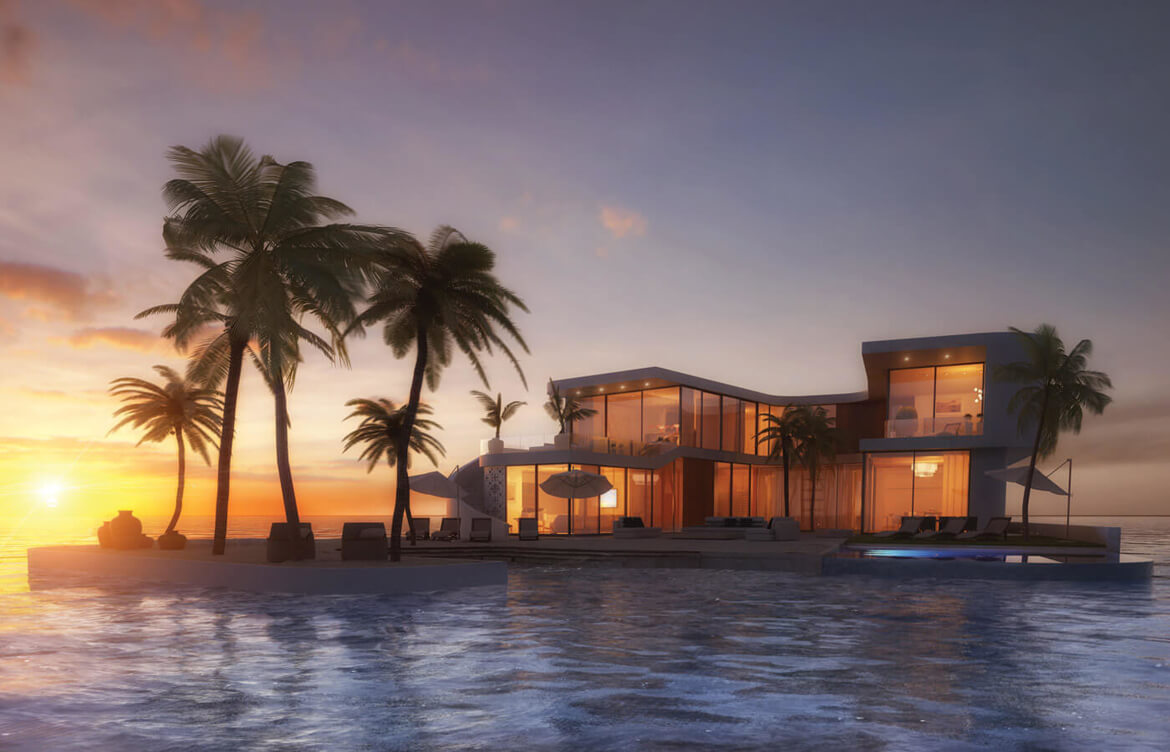
Traveling is fun and all, but sometimes you just want to be on your own private island; right? Well today we get a unique way to do exactly that, take a vacation on your own private island; The Floating Private Islands By Koen Olthuis. This unique and rather eye-catching design plays host to some creative concepts, which not only serves as some stunning spots to vacation, but also creates new underwater habitats for nearby sea life.
The design allows you to choose what type of home or facility you want on your island, as well as where it will be located. The customizable design offers luxury and an eco-friendly design that is sure to provide a unique and rather lavish retreat. Have a look at these sleek and quite bold concepts in the images below and above and speak your mind on it after the jump. For more information head over here immediately, and start stacking now!
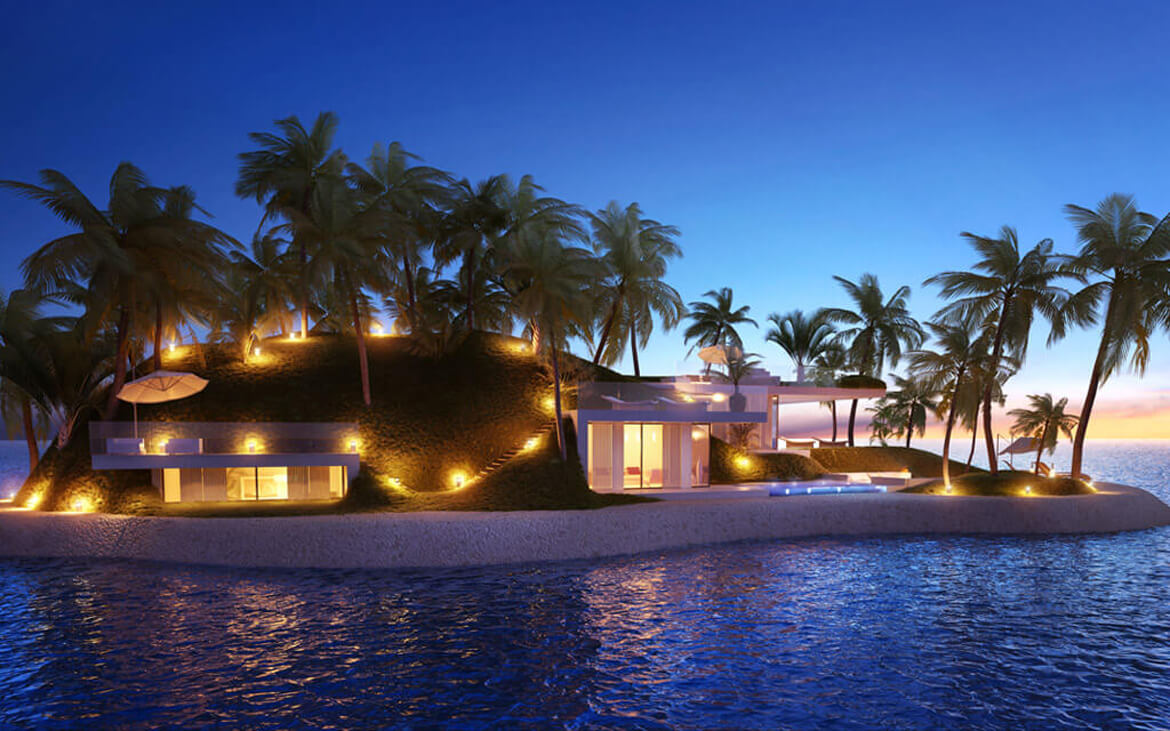
Real Estate Listings: First Floating Islands to be Up for Sale in Maldives, Dubai and Miami
By Staff Reporter
media@realtytoday.com
August.18.2015
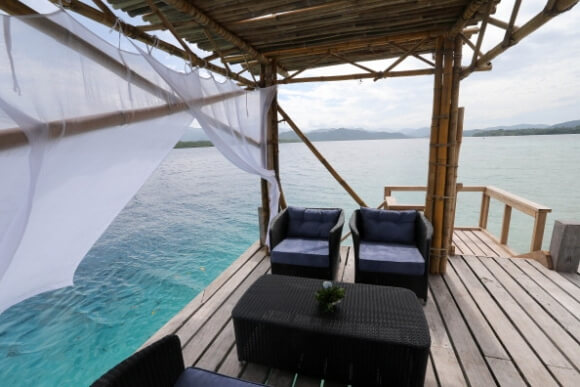
HONIARA, GUADALCANAL ISLAND, SOLOMON ISLANDS – SEPTEMBER 17: The lodge and private beach where Catherine, Duchess of Cambridge and Prince William, Duke of Cambridge are to spend the night on the island of Tuvanipupu on their Diamond Jubilee tour of the Far East on September 17, 2012 in Honiara, Guadalcanal Island. Prince William, Duke of Cambridge and Catherine, Duchess of Cambridge are on a Diamond Jubilee tour representing the Queen taking in Singapore, Malaysia, the Solomon Islands and Tuvalu. (Photo : Chris Jackson – Pool/Getty Images)
Christie’s International Real Estate has taken luxury properties into a whole different level. The company is set to start Amillarah Private Islands, a floating island empire to be first established in the tiny islands of Maldives, which will possibly expand to Dubai and Miami in the years to come.
Forbes has called this venture by Christie’s as “The World’s First Portable Private Islands.” The New York-based company has partnered with Dutch Docklands, which also specializes in high luxury properties. The partnership is said to be on-strategy for both ends. Dutch Docklands are also experts in on-water structures.
Other than it being a private and man-made island, the project will also be eco-friendly, self-sufficient, and highly customizable. The companies has also partnered with Ocean Futures Society, which specializes in eco-vacations. According to Daily Mail, they have hired Jean-Michel Costeau to help with the design and research for the sustainable islands.
In terms of customization, CEO of Christie’s Dan Conn said, “The opportunity to literally develop a private island on a body of water is a testament to Dutch Dockland’s skills in this arena. Buyers are able to customize the size, shape and style of their residence, within the broadest range of locations, beginning with this first opportunity in the Maldives.”
Safety will be no issue in Amillarah. Christie’s has also hired specialists and experts and they guarantee that the land will be safe from rising sea levels. The new venture will give buyers the opportunity to truly make their own paradise that they call their own masterpiece.
Potential buyers can check out their official website at www.amillarah.com. It is currently marketing itself as “Your Own Private Island: A piece of art you can live in.”
Amillarah, een privé eiland die je zelf kan customizen
By Gewoon voor hem
August.2015
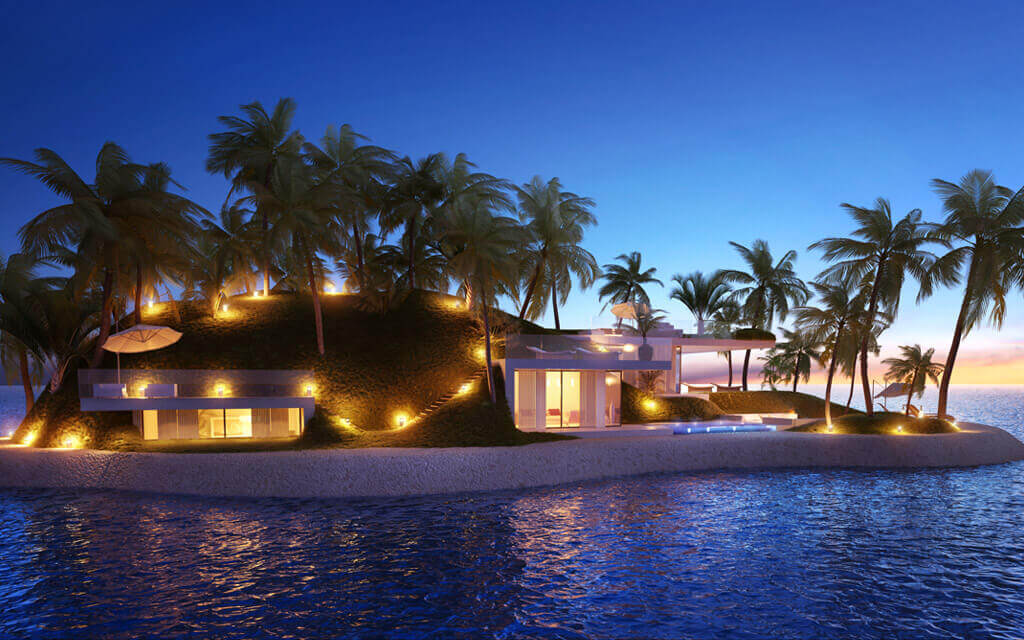 Amillarah, een privé eiland dat je zelf kan customizen! Jep, voor de superrijken gaan de mogelijkheden steeds verder en verder.
Amillarah, een privé eiland dat je zelf kan customizen! Jep, voor de superrijken gaan de mogelijkheden steeds verder en verder.
Volgens Amillarah, wat overigens staat voor privé eiland, zit er één groot nadeel aan het aanschaffen van een privé eiland; de locatie. Vrijwel altijd liggen ze erg afgelegen en zijn de meeste faciliteiten erg kostbaar. Dat is dus verleden tijd, de eilanden zijn geplaatst in een bepaalde zone met de faciliteiten die nodig zijn binnen handbereik. Verder zijn de eilanden te customizen qua indeling en formaat.
De eilanden zijn ontworpen om minimaal 100 jaar in top conditie te blijven, hebben totaal geen (negatieve) impact op de natuur en zullen tevens zorgen voor een prachtige onderwaterwereld die zich kan nestelen onder en rondom jouw stulpje.
Er worden er maar 43 gemaakt, dus zorg dat je er snel bij bent enne.. nodig ons ook even uit!
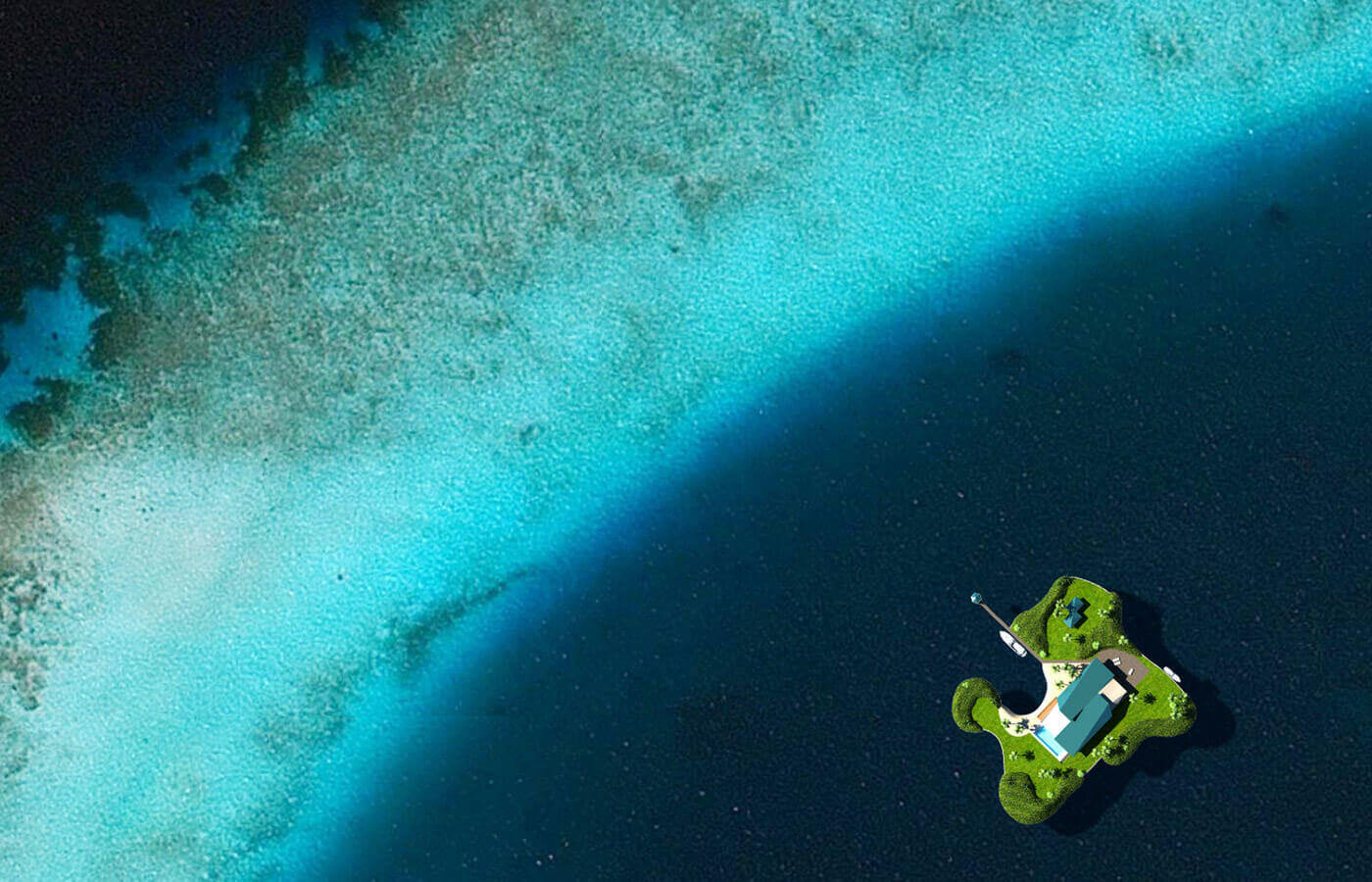
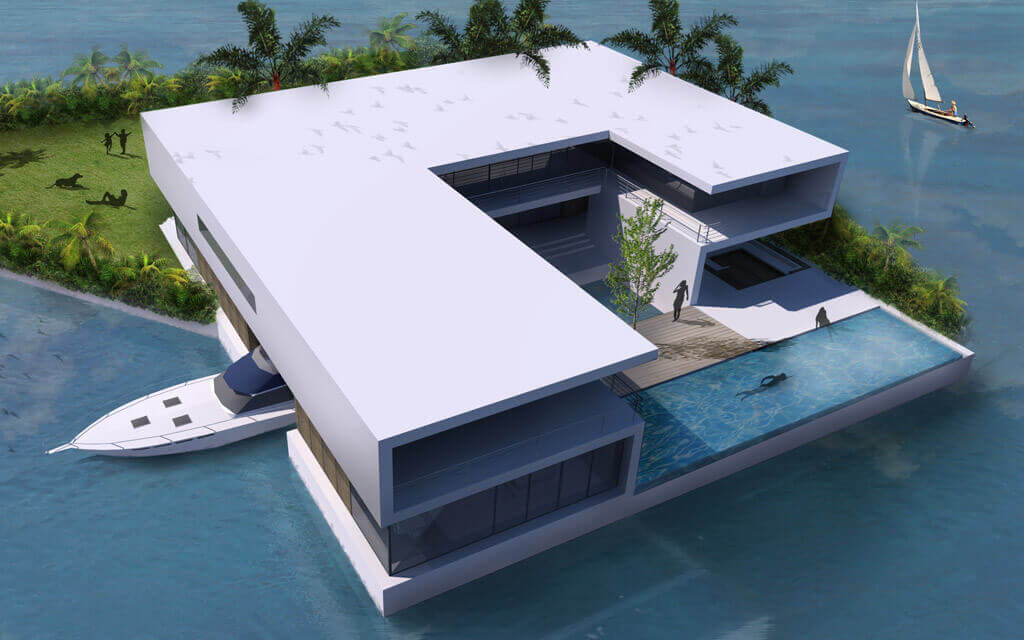
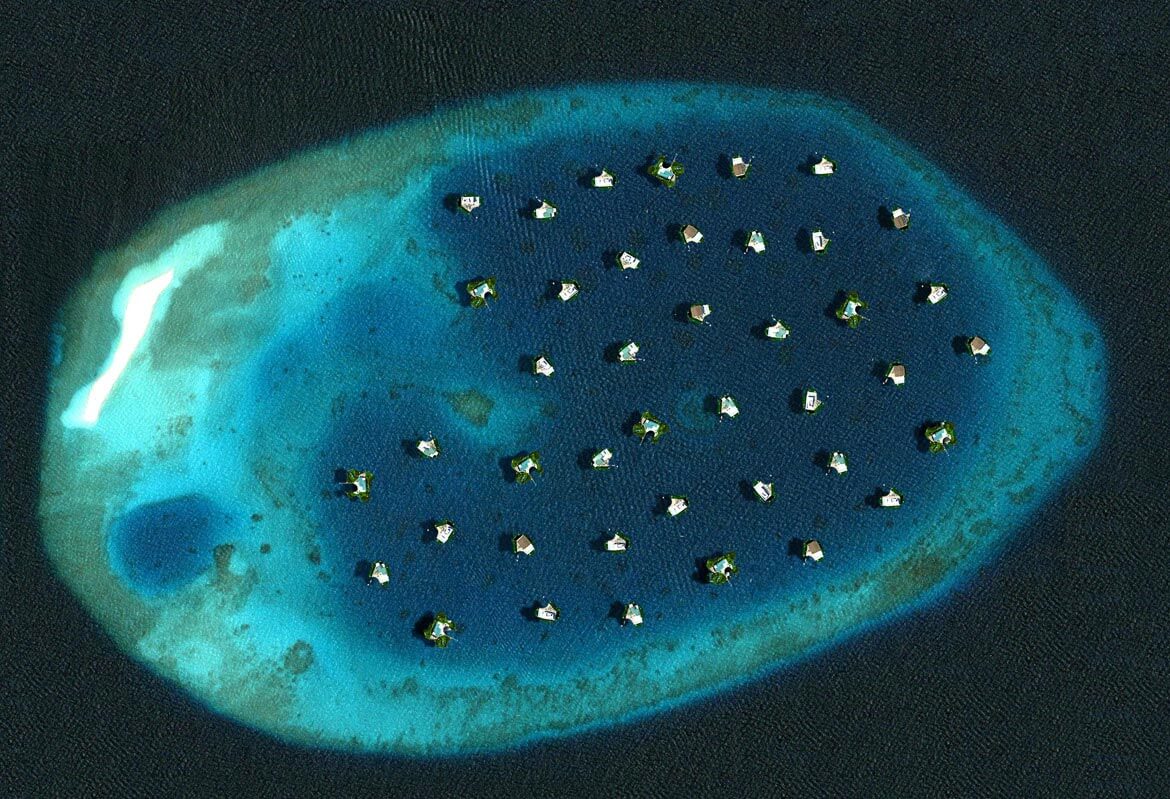
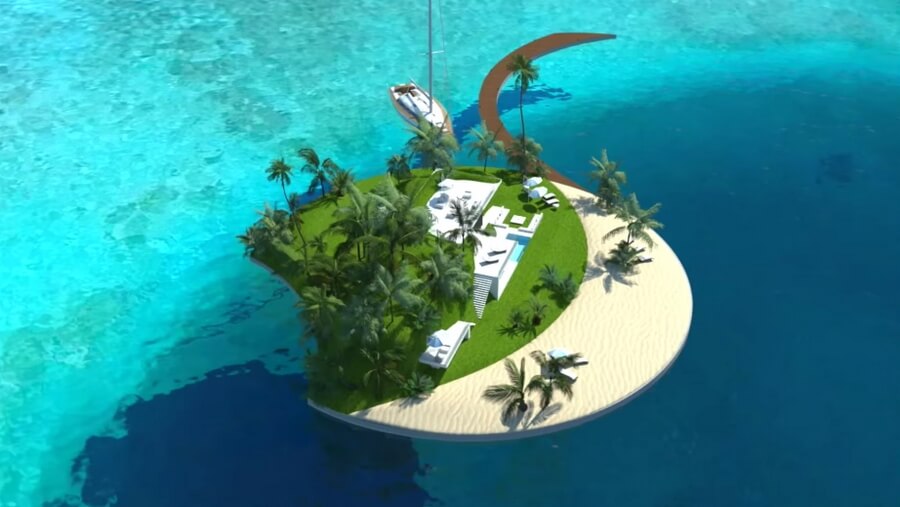
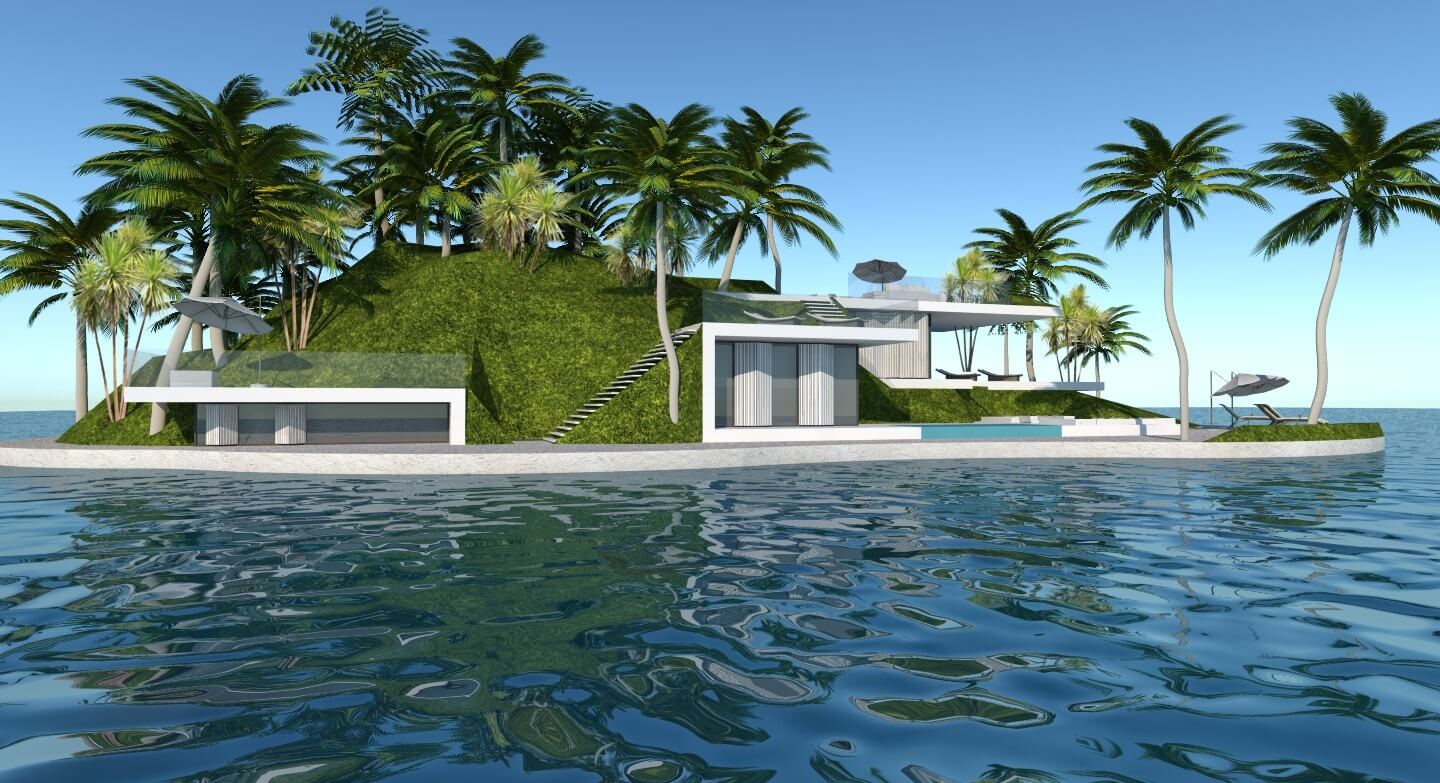

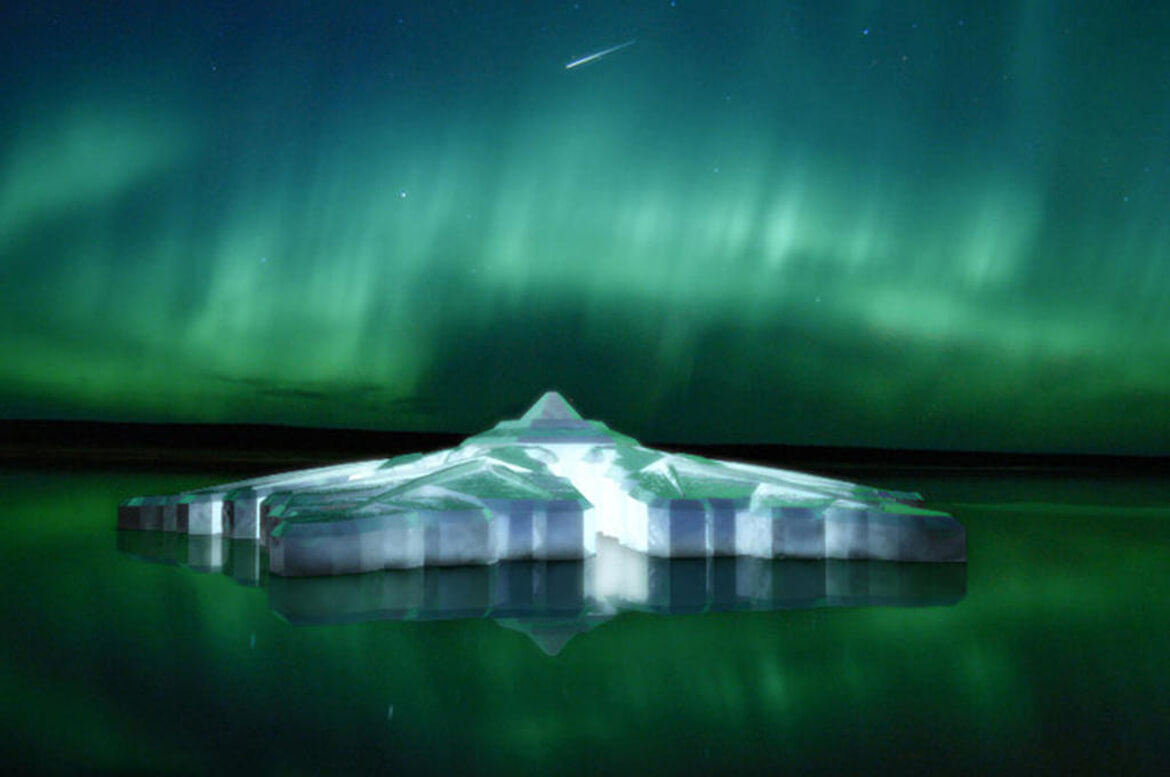

 Hi Europe
Hi Europe